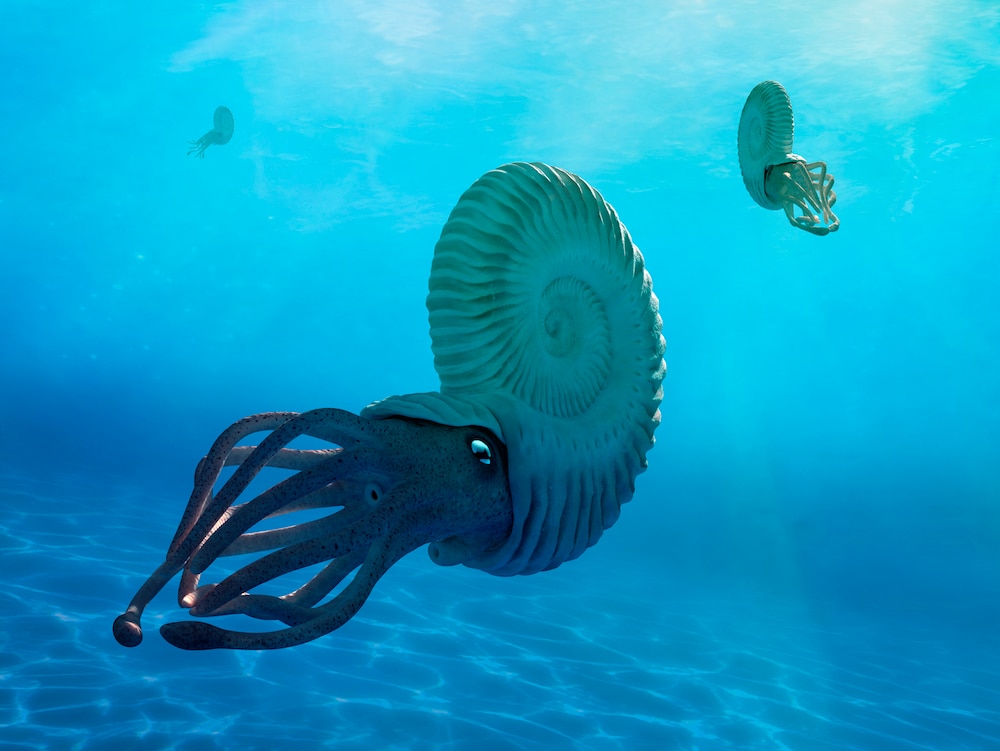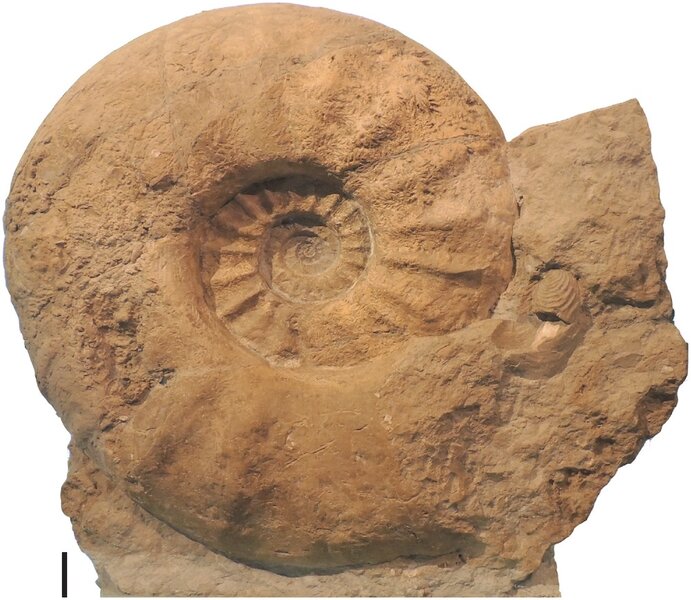Create a free profile to get unlimited access to exclusive videos, sweepstakes, and more!
Ancient Cthulhus filled the Atlantic 80 million years ago
In his house at Santonia, dead seppenradensis waits dreaming.

In 1895, quarrymen near Seppenrade in Westfalia, Germany uncovered a giant ammonite, nearly 2 meters in diameter. The animal, which was much larger than typical ammonite fossils, was named Parapuzosia seppenradensis, in honor of the locale where it was found.
Since that time, five additional German specimens were uncovered — one of which was kept by a quarryman after examination by scientists and subsequently placed inside a pub where it remains today — but placing them firmly within the evolutionary story of ammonites eluded scientists, owing to the rarity of these massive fossils.
A recent study by Dr. Christina Ifrim, from the Institut für Geowissenschaften, Ruprecht-Karls-Universität Heidelberg in Germany, and colleagues, uncovered additional specimens in both Europe and Mexico which filled in some of the gaps and allowed the story of these giant cephalopods to be told. Their findings were published in the journal PLOS One.
“The specimen is so big it was just not comparable to others, because there are no similar growth stages to compare with,” Ifrim told SYFY WIRE. Each growth stage substantially changes the structure of the animal such that a mature animal looks quite different from a juvenile. As a result, individuals who fossilized at different stages of development were often considered to be entirely different species.
“If you find one at half the diameter it looked different, so it was named differently. Meanwhile we know that growth stages in males and females are reached at different diameters. So, if you find two at the same diameter, they also look different. In the end, there were about eight species names in the literature, of which two are left now. All the rest we now know are seppenradensis,” Ifrim said.
Examining a total of 154 specimens revealed that seppenradensis evolved from a previous species which was already quite large, spanning approximately a meter across its shell. “This is already large for ammonites,” Ifrim said. “At a certain point this species migrated over the Atlantic and had a much larger distribution area. After that, they started to grow even larger. In the Gulf of Mexico, we can see how one species evolved into the other. There are intermediate forms between them.”
Ammonites are distant relatives of modern cephalopods — squid, octopuses, and cuttlefish — but they most closely resemble the nautilus in outward appearance, and might have lived similar lives. Most of their bodies remained inside the shell, curving along 200 degrees of the inner chambers, and they probably relied on water currents to carry them around the oceans gathering food from the seafloor or filter feeding.
“Ammonites are thought to have been bad swimmers,” Ifrim said. “For most of their lives they were hanging out in the water column. Hatchling size is only about one millimeter and though we don’t have the hatchlings for this particular species, there’s no reason to believe that should have been different. At this small size they were distributed by water currents.”
That distribution might explain how these massive animals were found to have evolved concurrently on both sides of the Atlantic, despite their inability to move around very much. Analysis of the available specimens in both Europe and Mexico showed ammonites undergoing rapid growth, to similar diameters, on both sides of the ocean.
The fossils hail from a geologic period known as the Santonian, which occurred roughly 80 million years ago toward the end of the Cretaceous. This period is marked by pronounced growth in a number of other species as well, including the top predators of the late-Cretaceous, a group of large marine reptiles known as Mosasaurs.
Ifrim and colleagues have not yet settled on a driving force behind the enlargement of these giant ammonites, but one possible explanation is the enlargement of Mosasaurs occurring at the same time. These predators were known to hunt ammonites and growing larger may have been one survival strategy, though the current evidence on that front is inconclusive.
“We have been discussing a lot of hypotheses. Climate warming, climate cooling, changes in ocean current, and we just could not find any parallel which matches the time of the size increase. Mosasaur size increase was the only mechanism we found which could have triggered this giant growth. We know these mosasaurs were preying on other ammonites. There are bite marks which absolutely match the dentition of mosasaurs. But not all of those ammonites grew large, so it’s not the only way to respond,” Ifrim said.
To date, the 1895 specimen is still the largest ever found, but there may be larger ammonites waiting to be discovered in ancient ocean beds. Maybe they’ll be able to settle the question of what caused this massive growth.
Whatever the reason, those Santonian seas were alive with truly massive monsters. And if you’re going to have giant reptiles, you also need incredible tentacled kaiju to balance the scales.



























